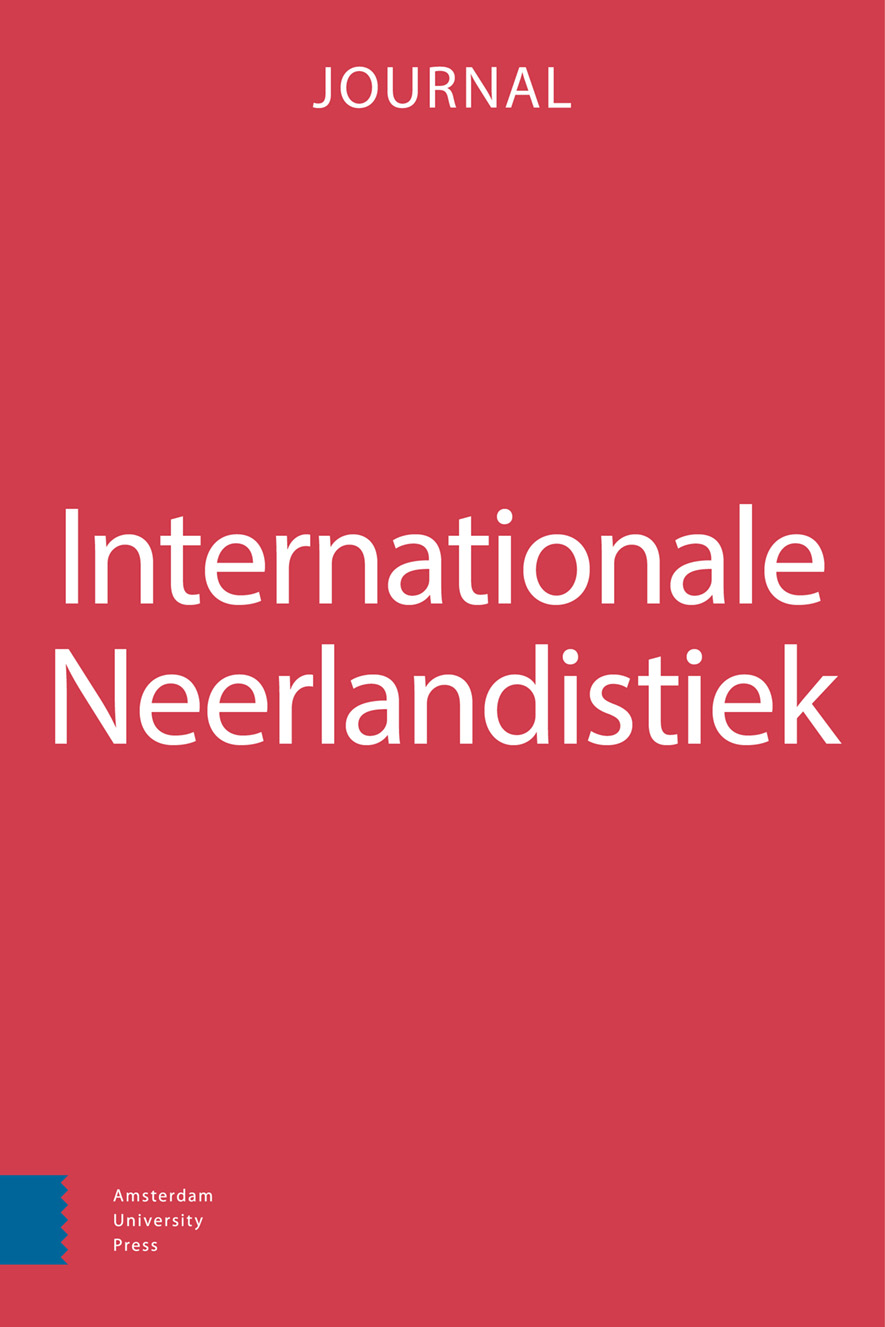-
oa Ik, Vondel (2017) van Hans Croiset als fictieve autobiografie
- Amsterdam University Press
- Source: Internationale Neerlandistiek, Volume 59, Issue 3, Oct 2021, p. 171 - 185
-
- 01 Oct 2021
Abstract
In this article, I analyze Ik, Vondel (2017) by Hans Croiset. How does the reader of this book become convinced that he/she is reading a fictional autobiography of Vondel? I focused on two aspects that encourage such an autobiographical reading: the narrative strategy and the interplay of referential and fictional elements. The one factor that can captivate readers is the complex way in which the very elderly Vondel tells his story as an autobiographical self. He also reflects on his autobiographical writing and on the material forms his autobiography takes. The subservient role of his niece Agnes becomes more important to his autobiography, as his old age increasingly imposes restrictions on him. She appears to be hidden behind both the organizing narrative authority and the guiding narrator who present themselves from the very first chapter. The reader receives referential signals mainly through the annotations and the source list at the back of the book. Within the narrative there are referential signals in terms of the historical-realist details, personal names, locations, and events that create an effect of verisimilitude. Fictionalizing effects include the different types of conversations that I-Vondel stages, as well as the association of his emotion-driven memories with imagined elements.
Nederlandstalig abstract
In dit artikel analyseer ik het boek Ik, Vondel (2017) van Hans Croiset. Hoe raakt de lezer ervan overtuigd dat hij/zij een fictieve autobiografie van Vondel in handen heeft? Ik heb gekeken naar twee invalshoeken die tot zo’n autobiografische lectuur aanzetten: de vertelstrategie en het samenspel van referentiële en fictionele elementen. Dé factor die lezers kan verleiden, is de complexe manier waarop de hoogbejaarde Vondel zijn verhaal als autobiografisch-ik vertelt. Ook reflecteert hij op zijn autobiografisch schrijven en op de materiële vormen die zijn autobiografie aanneemt. De dienstbare en geloofwaardige rol van zijn nicht Agnes wordt naarmate zijn ouderdom hem steeds meer beperkingen oplegt, belangrijker voor zijn autobiografie. Zij blijkt schuil te gaan achter zowel de organiserende vertelinstantie als de gids-verteller die zich in Ik, Vondel vanaf het eerste hoofdstuk aandienen. Referentiële signalen krijgt de lezer met name via de annotaties en de bronnenlijst achterin het boek. Binnen het verhaal zijn het de historisch-realistische details, persoonsnamen, locaties en gebeurtenissen die een echtheidseffect tot stand brengen. Fictionaliserend werken onder meer de verschillende soorten gesprekken die ik-Vondel ensceneert, evenals de associatie van de door emotie aangedreven herinneringen met verbeeldingselementen.


